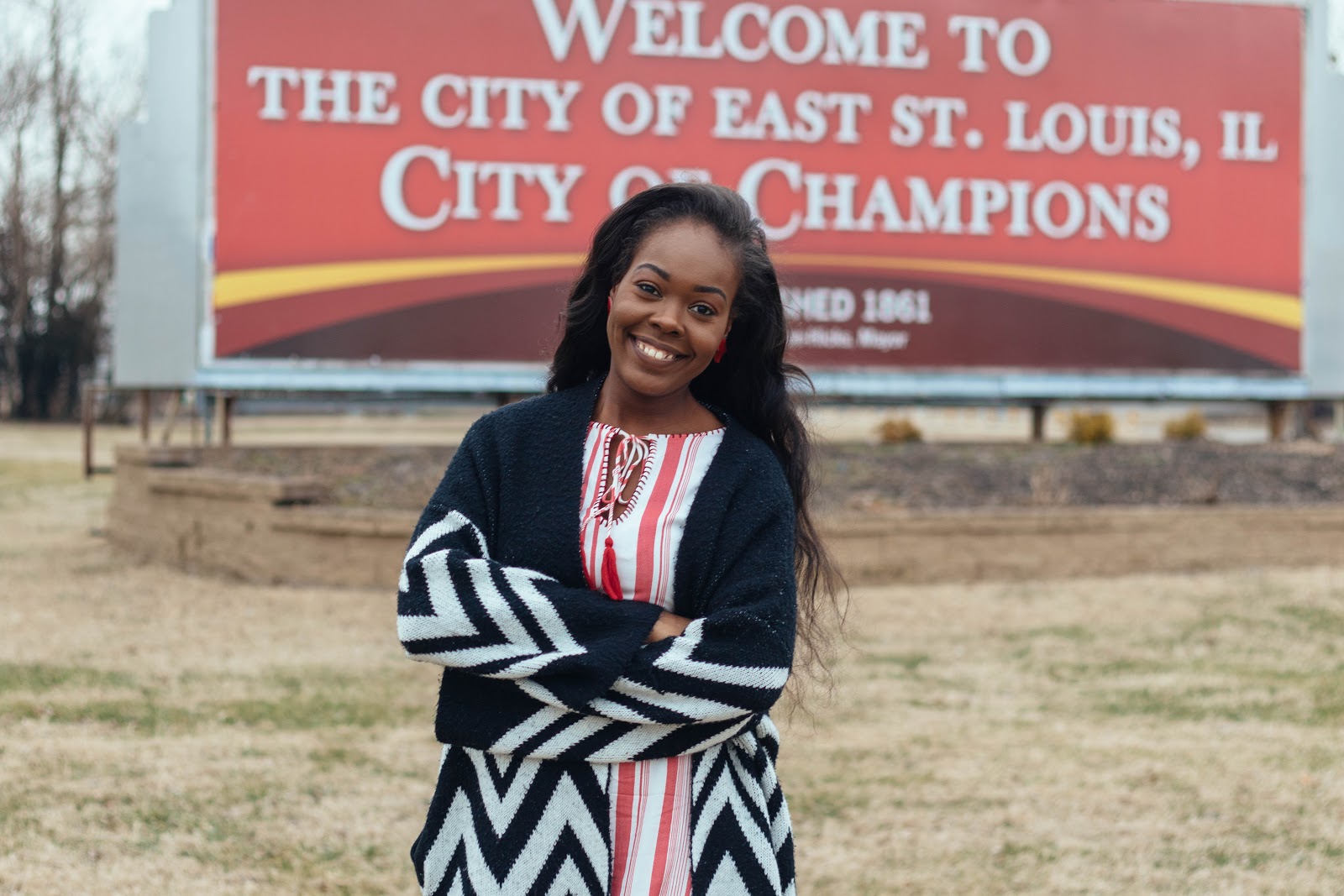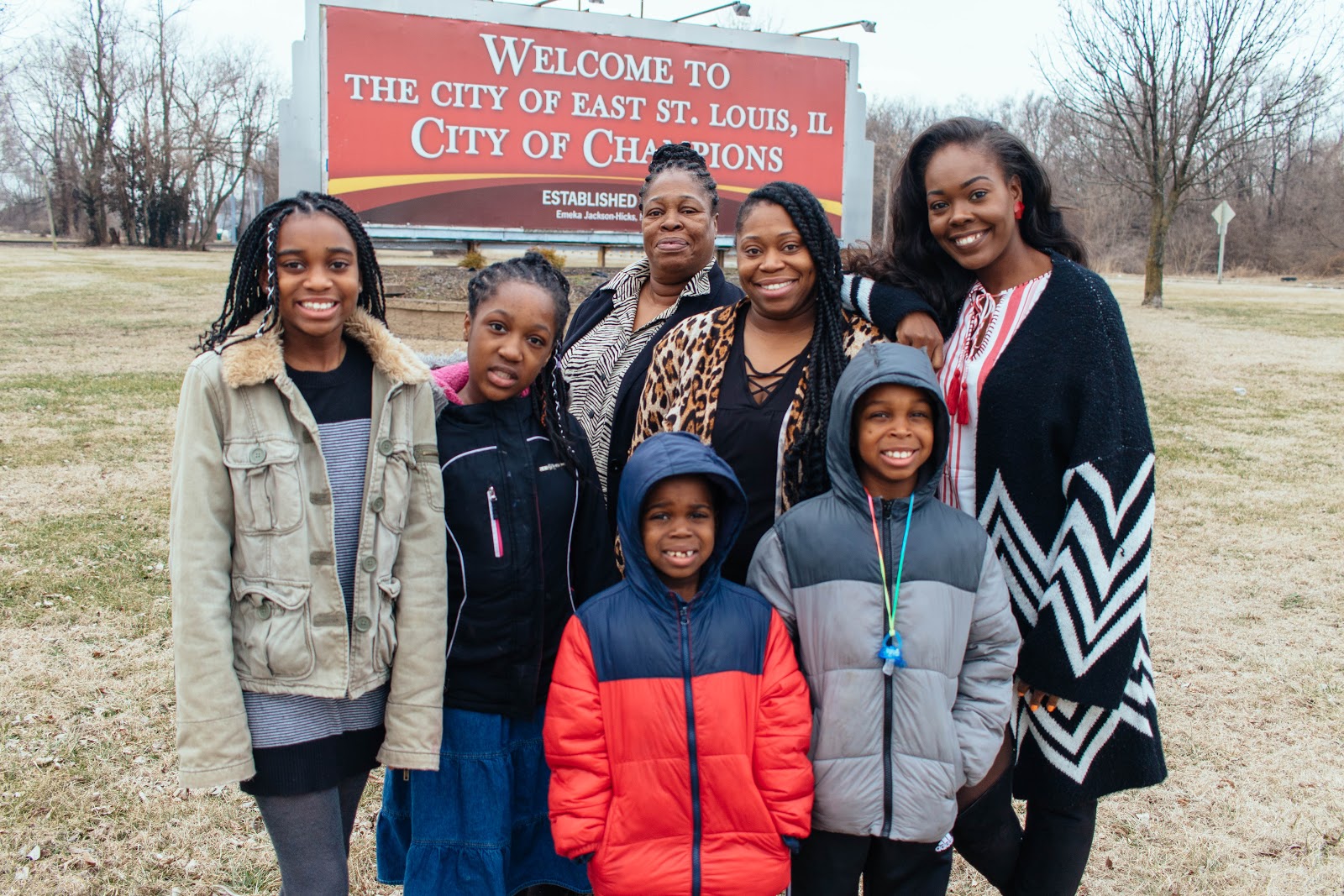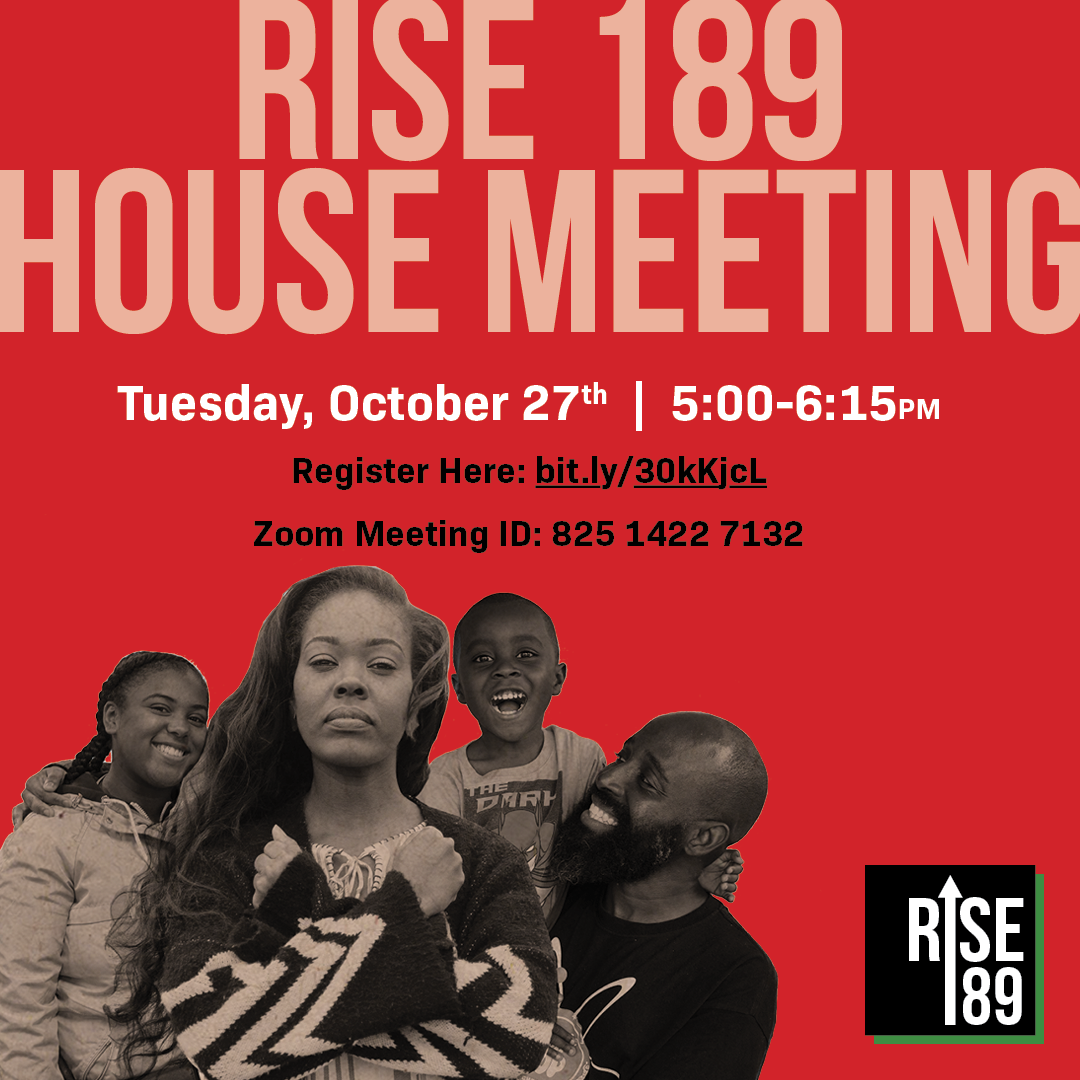‘Let’s Rise Together!’ Why I Stand with Rise 189’s Call for Education Justice
OCTOBER 20, 2020
‘Let’s Rise Together!’
Why I Stand with Rise 189’s Call for Education Justice
By Shontay Ford

I’ve lived throughout East St. Louis for most of my life. I love my city, and am committed to see it rise above the inequities that currently hold it hostage.
I was raised here, mostly around Washington Park, and went to school largely in District 189. Growing up, I had a mostly good experience in the district, but the odds were stacked against me. I didn’t have the most stable upbringing. My parents were on drugs, so I spent a lot of time shuffling from one family member’s house to the next. To make matters worse, only one to two teachers really pushed me. Despite these circumstances, I did well in school. I adapted quickly when it came to different subjects and styles of teaching. I should have graduated ready for college and beyond, but I didn’t. When I moved away from East St. Louis, I found that my grade school education held me back.
It didn’t have to be this way. In fact, in the few instances there was some effort put into my education, I actually had some deeply impactful experiences. In 8th grade, I went to Toussaint L'Ouverture in St. Louis. There, my interest for learning was heightened, because I was pushed to apply myself more. I took field trips and was exposed to new subjects, including STEM and architecture. In high school at Eastside, I remember touring a few premiere HBCUs. Experiences like these taught me there was a much bigger world beyond East St. Louis.
But these experiences weren’t nearly enough. High school didn’t challenge or prepare me for what was to come. Most of my senior year I wasn’t even in the classroom, because we got out of school at 12:30. The counselors and educators encouraged me to apply to college, but they didn’t tell me what to do when I got there. I ended up graduating and went on to study at the University of Arkansas at Pine Bluff. When I went off to college, it quickly became clear to me that my K-12 education didn’t equip me to succeed. I had the drive and the ambition to want more and do more, but nobody taught me what that looked like.
Stories like mine cannot continue. I have nieces and nephews in the district from ages seven to fourteen. I don’t want them going through the East St. Louis school system only to graduate and feel unprepared to take the next steps in life.
A few years ago, I was introduced to the concept of the school-to-prison pipeline. I hadn’t realized before just how much disinvestment in Black education and growing prison populations are deeply and directly connected. It made me think about my struggles with literacy. It’s hard for me to say this, but even at age 32, I still have difficulty with reading. Often, I have to read things multiple times to understand. My experience is unfortunately the norm, rather than the exception.
According to the Illinois Department of Education’s 2018-2019 data, only 14% of students in District 189 met or exceeded grade level expectations in English Language Arts. Worse, only 10% of students met or exceeded math proficiency levels. Not only is District 189 underperforming in English and Math, but there is also a clear difference between students in the district, 98% of whom are Black, and students from other parts of the state. What future is our district preparing or not preparing our youth for?

From what I can tell, the problems kids are dealing with today are worse than ever. During the 2019-2020 school year, my younger family members did not get books until the middle of the school year — books they are not allowed to take home. How are students supposed to be graded if they have nothing to work with or learn from? How are students supposed to thrive if the schools lack basic materials? This isn’t normal.
Meanwhile, each kid is dealing with their own problems at home, challenges that put them at an immediate disadvantage and are completely out of their control. They get so little support or empathy in our schools. I know new initiatives are being implemented in the district to address this: a new coordinator developed a socioemotional curriculum, and staff are being trained to be trauma-aware. I believe these measures are a great start!
But there is more we can do. We need more impactful resources and empathetic teachers who can understand and support our youth. We need community oversight to ensure this. People like me need to be involved. The strategic planning process must consider schools becoming hubs for communities to thrive and include parents, residents, teachers, and others, so we can all play a part in creating the vision and goals for our district. Lives and futures are at stake.
Today, I work with youth in the community. I’m working towards realizing resident visions for East St Louis. I'm focused on elevating youth, supporting them in using their voices. I want them to recognize and activate their power.
To get there, something has to shift. And it starts with us, the community. Even if we can’t fix everything at once, we must start somewhere. That’s why I’m a part of Rise 189.
Rise 189 envisions a school district where all students thrive and perform on grade level. Our three policy solutions for district leadership were developed through input from residents and researching other school districts.
We call on district leaders to 1) implement a strategic planning process in partnership with the teachers, parents, and students of District 189 and other key community stakeholders; 2) report progress towards the plan to the community annually; and 3) record and televise all school board meetings.
When implemented, these policy solutions will raise our school district to a higher level—one that does justice to our students and our city.
We understand that the District has worked to engage the community in a variety of ways, and we hope to build off of that work. Our current focus has been to push district leaders to record and televise all school board meetings. When we met with Superintendent Culver recently, he assured us that future board meetings will be on Zoom and video recorded, so they are accessible to the community. His response to our solution left us hopeful that we can partner with our District leaders to take our schools to the next level.
Next, we’re having a virtual house meeting on October 27th to listen to parents, students, and District 189 stakeholders to surface stories of what is most important for students and schools right now.
You can RSVP today: https://bit.ly/30kKjcL. Will you join us?

